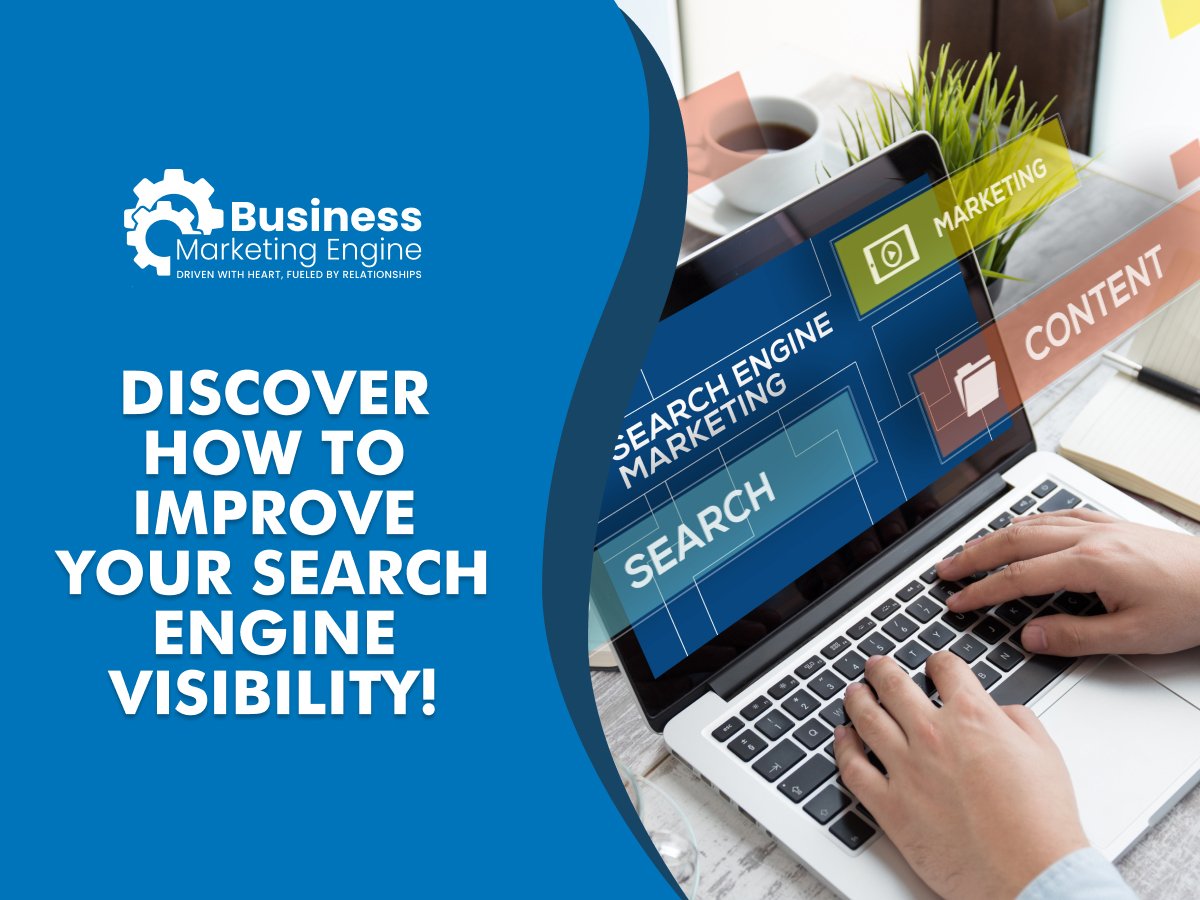Search engine visibility is key to your success as a business owner or entrepreneur! You know that. After all, if people can’t find you online, they can’t learn about your business or buy from you. That’s the reality of selling in a world dominated by search engines like Google.
Improving your search engine visibility is tricky. Even once you search “how to increase search visibility,” things are still challenging. Yet, let’s face the facts. A million articles on the internet will supposedly help you do it. Sadly, only some of them pack the solutions you need.
Don’t worry, though.
That’s why we’re here.
We understand how to improve search engine visibility, and we’ll help you do it! From ways to boost your keywords to help you ensure the best mobile experience, we’ll give you everything you need. Continue reading below to discover how to generate more traffic to your website!
What is Search Engine Visibility?
Let’s ensure that we’re all on the same page by talking about what search engine visibility is at its core. (That way, you only get halfway through this article to realize you had something else in mind. Clarity is always best, especially with websites and marketing.)
Search engine visibility refers to how easily search engines can find and rank your website on result pages. (Note: We’ll also refer to search engine visibility as SEO visibility.) And it’s important for several reasons. For starters, high search engine visibility allows you to:
- Capture more organic traffic
- Increase trust between you and your audience
- Improve your long-term gains
- Maintain affordable marketing strategies
- And more
At the end of the day, the higher your search engine visibility, the more chances you have to appear at the top of search results. That means people will be more likely to click on your website than others.
How do you tell if you have high search engine visibility?
Search Visibility Score
This score measures the visibility of your website in search engine results. The score is calculated by analyzing search data from various search engines, including Google and Bing. However, there is more than one way to calculate the score.
There are a ton of different ways.
Nevertheless, you can quickly and easily see how well your website performs by periodically checking your score. Get started with tools like Google Search Console: Performance Report.
GSC is a great free tool that uses real data to set your score. It doesn’t guess or estimate as some other tools may. You can also check out tools like SEMRush, which can help you compare your score against your competition. It can also help you see how well your website is fairing over time.
What is a good score?
A score of 0 percent would mean that you’re not ranking high enough for any of your target keywords to generate organic traffic. Meanwhile, a score of 100 percent means you rank at the top of page one for all of your target keywords. So, ideally, you want your score as close to 100 percent as possible.
Business Marketing Engine is here. If your score leans closer to 0 percent, don’t worry. This article will help you improve it.
We have the world-class team you need to boost your online visibility.
 How To Improve Your Search Engine Visibility?
How To Improve Your Search Engine Visibility?
Now that you understand search engine visibility well let’s work on improving yours! Continue reading for more information, and don’t worry. As we said before, we’re here to help if you get lost.
1. Use long-tailed keywords wisely
Long-tailed keywords are search terms that are more specific than generic search terms. For example, a generic search term might be “t-shirts.” Meanwhile, a long-tailed search term could be “black cotton t-shirts.” Utilize these long-tailed search terms when it makes sense to do so. If used wisely, you can capture a ton of organic traffic flowing in a specific direction.
You can also bypass a lot of the standard competition.
2. Adapt mobile-friendliness
Search engines understand that mobile devices rule the world. So they tend to prioritize mobile-friendly websites above all else. (All the more reason to make sure your mobile visitors have a great time.) The easiest and quickest way to do this is by using a responsive design that automatically adapts depending on the device being used.
That way, it doesn’t matter if they use a laptop, phone or tablet.
They’ll have a great experience.
Additionally, you should worry about page speed! If your website takes forever to load, people will click off and find another website. So make sure your website loads in a snap.
3. Optimize your title and description tags
If you think titles and description stages need to be more critical, think again. Search engines check your website and use your titles and description tags to understand your content.
So make sure you craft a compelling title! Any more, and Google may clip part of it and leave your title less effective. But remember, titles should always be less than 60 characters.
Once you have a compelling title, follow it up by creating an accurate yet engaging meta-description that summarizes your content. Similar to titles, meta descriptions should be between 110 and 155 characters. If you do those two things, search engines and people can understand your content easily.
4. Don’t underestimate page dwell time
Page dwell time refers to how long a search engine user stays on your website before returning back to the SERP. Make no mistake, either. Dwell time is a huge deal to search engines. The longer the user spends on your website, the more search engines will value your pages and thus increase search visibility.
If you want to ensure your website has a good dwell time, ensure that you have a ton of content to offer users and keep them engaged.
5. Consider relevancy in your backlinks
Backlinks are one of the most powerful search engine visibility tools, but they’re only effective when relevant. Search engines prefer high-quality backlinks from pages that have related content to yours.
Ensure to acquire backlinks from websites related to your content topics. This will help search engines recognize your pages as being an authority in the field. It will also bring value to your target audience.
6. Utilize LSI keywords
Latent Semantic Indexing (LSI) keywords are terms that search engines use to identify how a query relates to search results. By using these keywords throughout your content, search engines can recognize the semantically relevant content of your pages and rank them higher.
To find LSI keywords, focus on the main words or phrases you’d like to target and then search for related words or phrases that will help search engine algorithms connect the dots. You can also check out related questions on other sites that could be used as potential LSI keywords.
7. Practice internal linking
Internal linking is a crucial tactic that helps search engines understand the structure of your website! By adding internal links to other web pages on your site, search engine crawlers can easily access and index any page you link to so it appears in search results.
Plus, internal linking allows visitors to navigate quickly between different parts of your site. This way, they’ll have an easier time finding what they’re looking for, which improves user experience and keeps people engaged with your content longer.
8. Conduct a regular SEO audit
Performing regular SEO audits can help you identify any search engine visibility issues your website may have. An SEO audit is a thorough review of your site’s search engine performance, content quality and keyword optimization. It will tell you how search engines view your site and allow you to make improvements where needed.
9. Optimize your site’s featured snippet
Featured snippets are search engine results that appear at the top of search results pages. Often, they answer a user’s question without them having to click through to the page.
They’re a great way to get your website more visibility and click-throughs. To optimize your site’s featured snippet, include relevant keywords in the page title, meta description and page content.
Additionally, experiment with formatting tools! Use H2 and H3 headings, lists (e.g., bullet points) and bolded text to draw attention to important parts of the page.
If any part of this feels like it would be too tricky to master on your own, contact us! We help business owners capture their audience’s attention with thrilling SEO strategies and marketing tactics. If you want to learn more about how we can help you improve your online visibility, click here to get in touch!

 How To Improve Your Search Engine Visibility?
How To Improve Your Search Engine Visibility?



